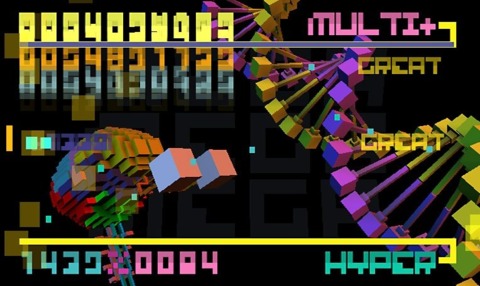Gaijin Games offers indie devs Bit.Trip tips
GDC Austin 2009: Lead artist Mike Roush explains how the path for indie darlings Bit.Trip Beat and Bit.Trip Core was laid by Tomb Raider: Underworld on the DS.
Who Was There: Mike Roush, lead artist of Gaijin Games. Roush delivered a presentation on "holistic indie console game design," which Gaijin has used to create the breakout WiiWare titles Bit.Trip Beat and Bit.Trip Core.

What They Talked About:Roush eased attendees into the first day of GDC Austin week with a short session on "holistic indie console game design." Playing off of holistic medicine, Roush described the idea as simply a case where the whole is more than the sum of its parts. In the case of Gaijin Games, those parts were the artist (Roush), the programmer (Chris Osborn), and the designer (company founder Alex Neuse). The holistic approach comes out of brainstorming sessions where every member has input on every facet of the game.
Roush explained that whatever project a small team takes on needs to be right for the people involved. If one-third of the developers aren't sold on what the team is making, it shows through in the final product. While each of the team members has veto power over decisions in their own disciplines, Roush said none of them actually use it.
As for the benefits of holistic game design, Roush said you end up getting "deeper" products, as well as more input and unity from the team. It's not a silver bullet, as Roush cautioned not everybody needs a deep experience, and getting everyone on the team to buy into an idea can be difficult. He also stressed that a team needs to be adaptive to change for the holistic approach to work.
While Gaijin has made a name for itself in the indie gaming community with the holistic design process, it owes the framework for its success to a surprisingly mainstream source. Roush talked about meeting his Gaijin cohorts while working on Tomb Raider: Underworld for the DS. On that project, the team had to restart the project from scratch multiple times until they stumbled upon the holistic game design approach with contributions from every part of the team. When that worked, Roush said the team split to form Gaijin and used the blueprint that led to success with Underworld.
Quote: "Nerd!"--A member of the audience, after Roush capped his presentation by quoting a dying Spock's final line from Star Trek II: The Wrath of Khan, "The needs of the many outweigh the needs of the few or the one."
Takeaway: The holistic approach to game design can be a boon to independent developers with small teams. However, everyone needs to be on board for the process to work. Developers using the holistic approach to game design need to trust that everyone on the team will contribute ideas for everything, but be willing to yield for the good of the project as a whole.
Got a news tip or want to contact us directly? Email news@gamespot.com
Join the conversation